You will love this recipe for homemade Cherry Jam. It contains just three ingredients: fresh cherries, lemon juice and sugar, and is made in the classic manner, without the addition of pectin. This is a must-try jam that captures the flavour of cherries. As they have a very short season, this is a great way to make the most of this special fruit, so you are able to enjoy their flavour when the season has ended.
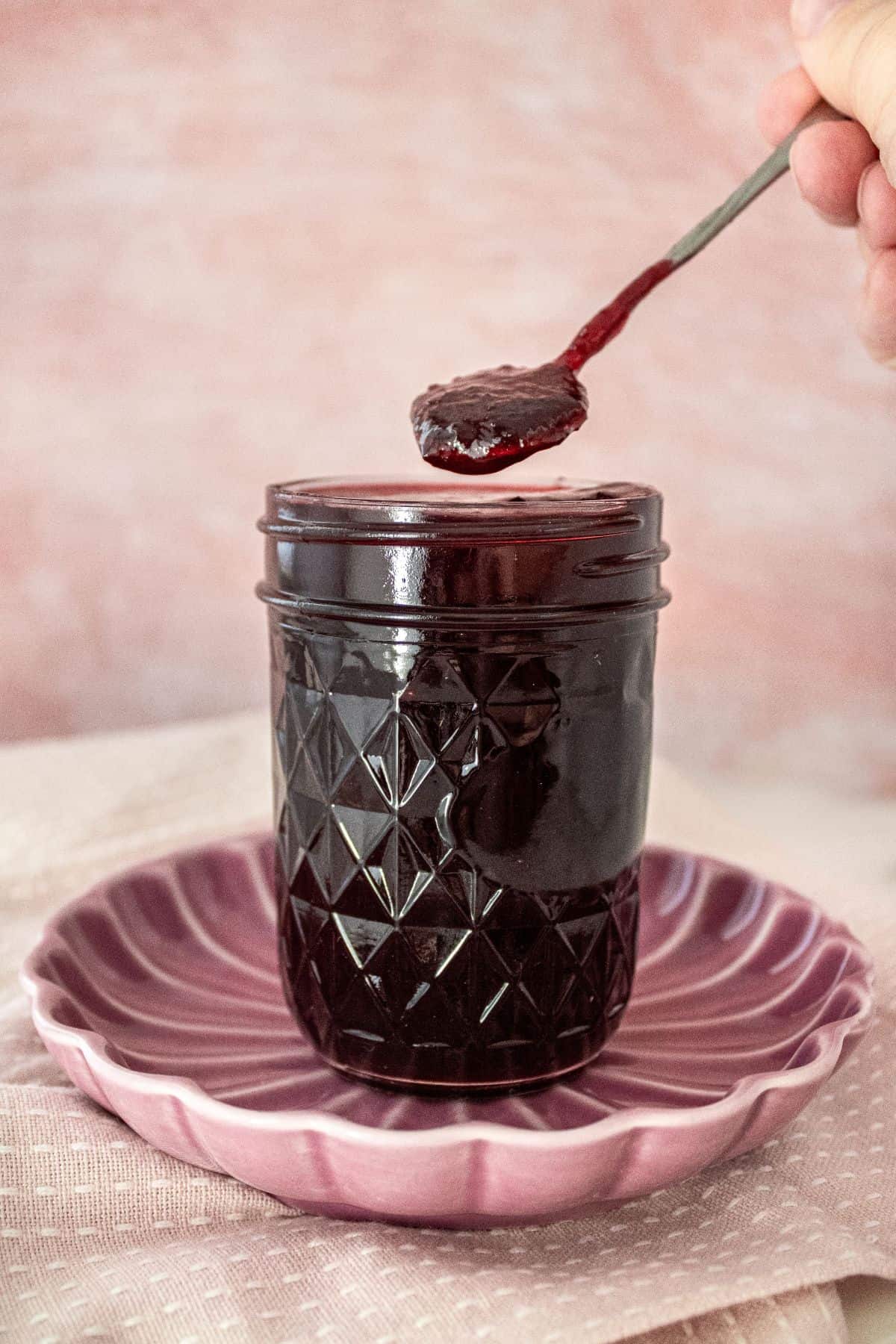
Why You’ll Love This Recipe:
- Homemade jam is superior to store bought; the flavours are fresher and brighter.
- You will not find any unwelcome additives, artificial preservatives or thickeners that you may find in a commercially prepared Cherry Jam. This is one of the most important aspects of homemade produce – you control the quality of the ingredients.
- Jam making is simple. You just need to invest a little of your time; when you finish and see your own jars of jam lined up, you will know that it was time well spent.
- You will not need any special equipment to make this recipe. Just a large, wide, non-reactive saucepan and a long-handled wooden spoon to keep your hand away from the boiling jam.
- You will find many ways to enjoy this beautiful condiment.
Recipe Inspiration: one of my favourite cooking activities is using fruits and vegetables to make jam, marmalade, pickles, sauces and chutney. There is definitely a genetic influence as some of my recipes date back to my great-great-grandmother. It is so rewarding to see homemade produce on your pantry shelves and I am constantly inspired to try something new.
Ingredients and Substitutions:
Please see the recipe card further along in the post for exact quantities of ingredients and the full method.
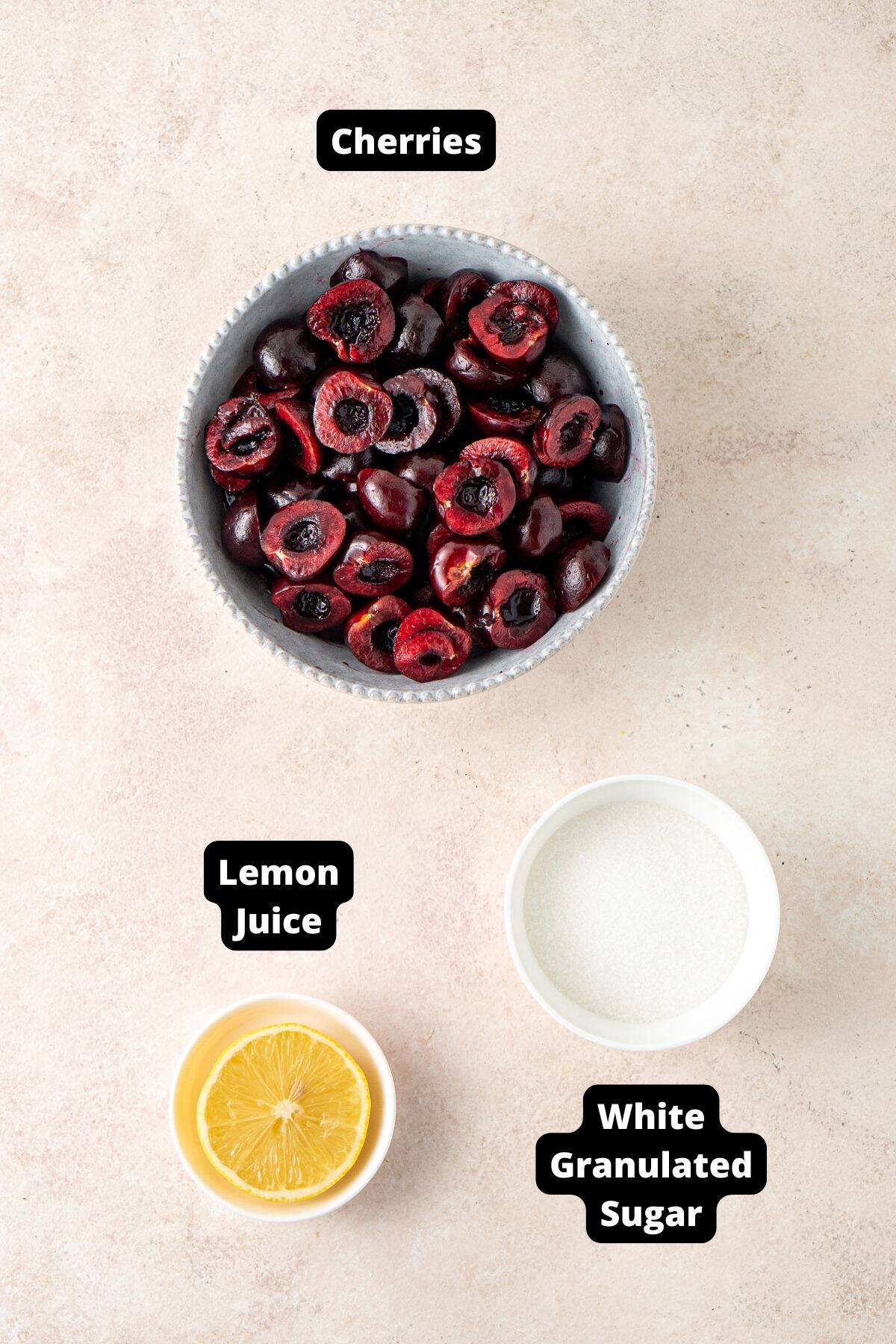
- Fresh cherries – when choosing cherries, look for those that are freshly picked and just ripe. In fact, using some slightly underripe cherries or sour cherries will add more pectin. Avoid cherries that are overripe or soft.
- Lemon juice – cherries are low in pectin so we add freshly squeezed lemon juice to add acidity and assist with the jam setting.
- Sugar – we use regular granulated sugar. It not only adds sweetness, but it also interacts with the acids and pectin, helping the jam to set. As well, it has a preservative effect enabling the jam to be shelf-stable to enjoy through the months ahead.
Variations:
Spices – if you wish, you could add spices, such as cinnamon, ginger or nutmeg.
How To Make Cherry Jam:
Please see the recipe card further along in the post for exact quantities of ingredients and the full method.

1 – Prepare the cherries:
Pit the cherries, cut in half and add to a large saucepan.
2 – Simmer the cherries:
Place a lid over the saucepan and bring to a simmer over a medium heat. Stir occasionally, for about 10 minutes. The cherries will release a lot of juice.
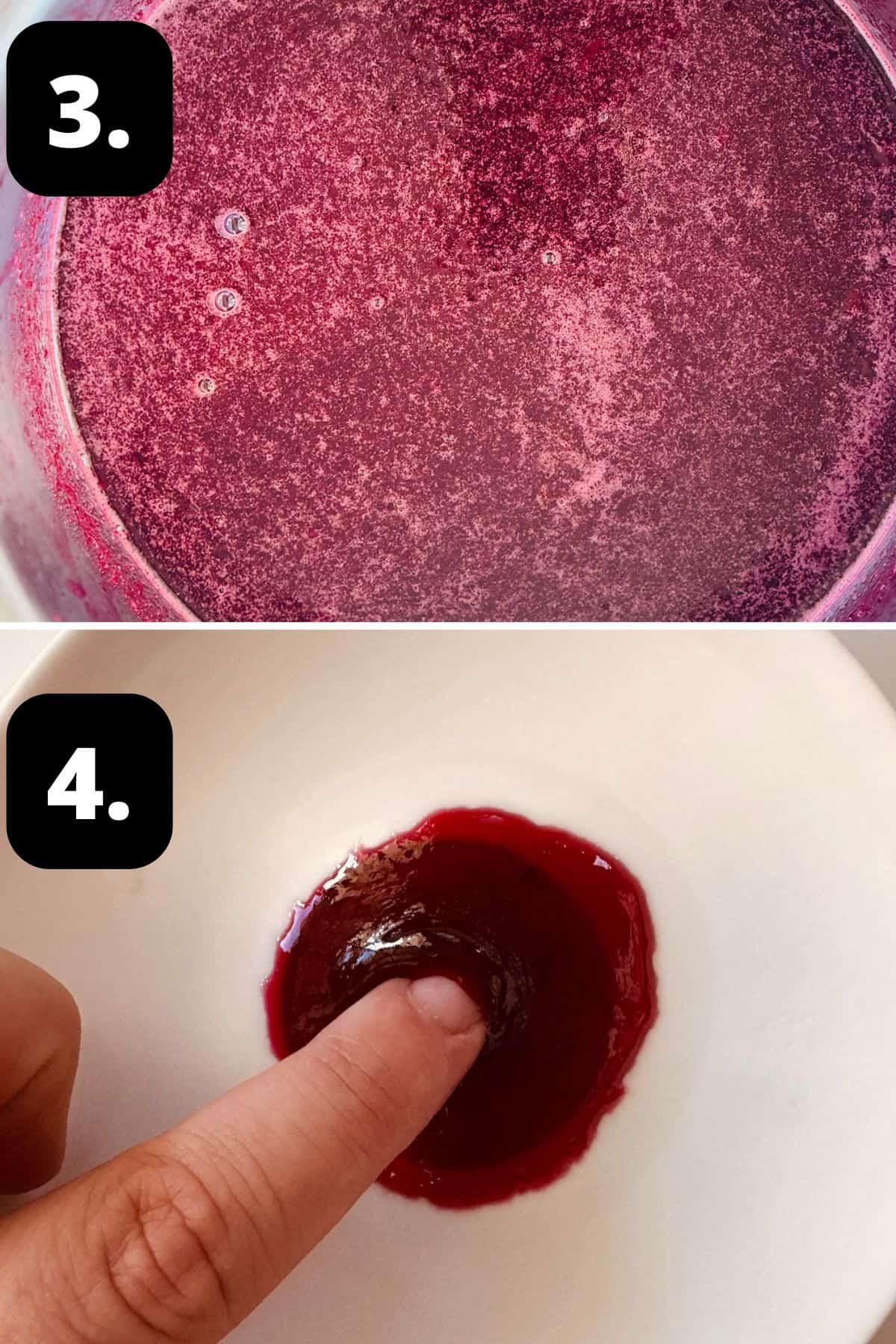
3 – Purée the cherries:
Turn off the heat. Using a handheld blender, carefully purée the cherries. Add the sugar and lemon juice and return to the heat over medium, stirring to dissolve the sugar.
Once dissolved, bring the mixture to a boil and cook.
4 – Testing for setting point:
Test for setting point using the cold plate method. When the jam wrinkles, it is ready.
Hint: ensure the sugar is dissolved before bringing the mixture to a boil. This will help avoid any crystallisation in the jam.
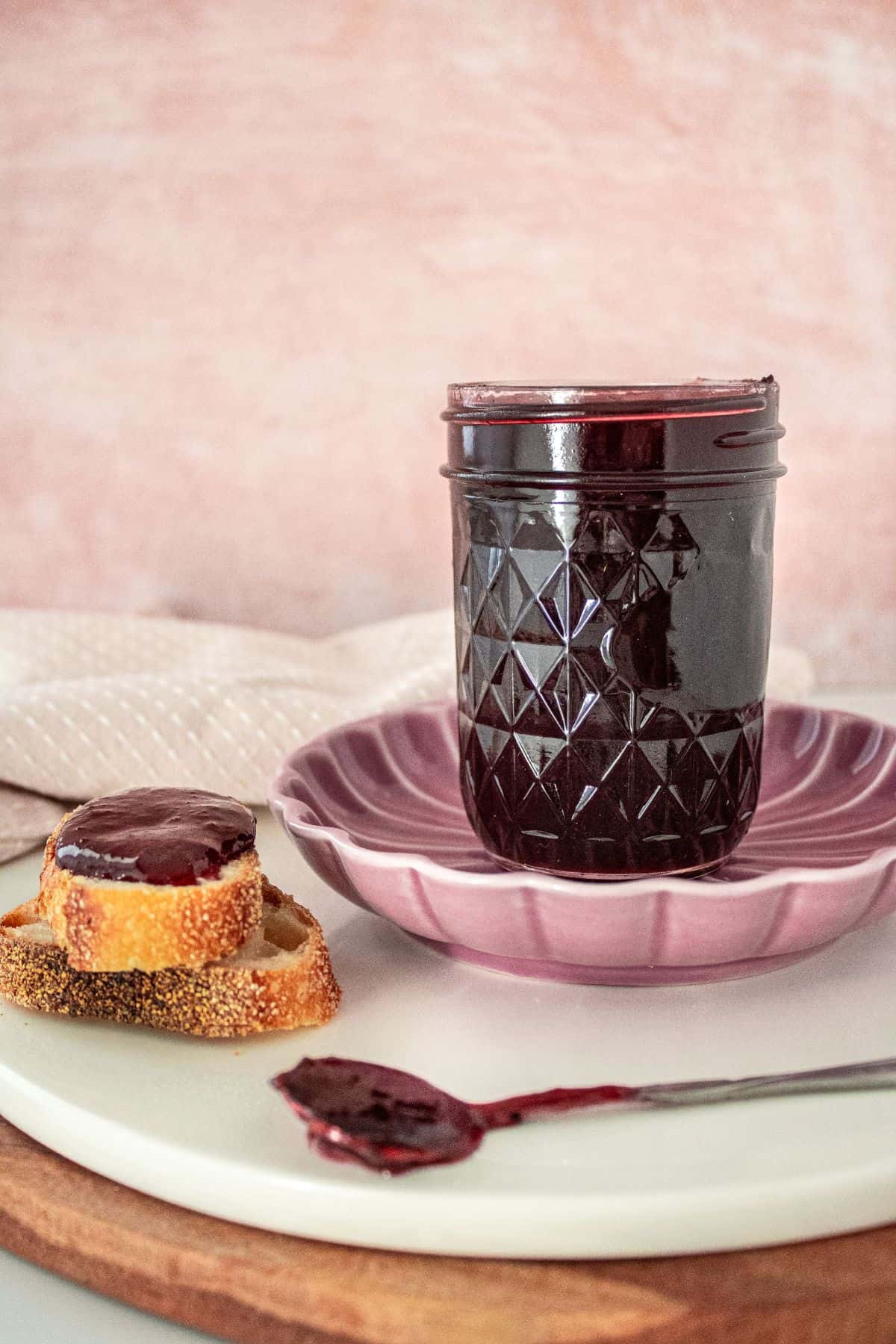
Tips for Success, Storage and FAQs:
If you follow the instructions in the recipe to thoroughly sterilise the jars you use, don’t reduce the amount of sugar and cook the jam properly, the jam will be shelf-stable for a year. After opening a jar, you should store it in the fridge and be sure to always use a clean spoon to remove the jam.
I have found that I achieve a much nicer, softer set of jam when blending the fruit. I have made Cherry Jam with halved cherries on several occasions, and although it is delicious, it is more the consistency of a sauce than jam.
Pectin is a naturally occurring starch, found in varying degrees in fruits and vegetables. It is what makes jams firm when they are cool. When combined with an acid and sugar, and cooked to a high temperature, it forms a gel. As cherries are not naturally high in pectin, a small amount of lemon juice is added for acidity and to boost the pectin content.
Conventional jam requires a lot of sugar, but please don’t reduce the amount. The sugar not only sweetens the fruit but also helps the jam to set and acts as a preservative. If you reduce the sugar, your jam may not be shelf stable.
Lemon juice has an important role in jam-making. The acidity and the pectin it contains helps the jam to set whilst also balancing the sweetness.
Good quality fruit that is frozen fresh and isn’t overly icy can be used. It can be used from frozen. The cooking times will be similar – just test as per the recipe.
Top Tip:
For the best result, use good quality fruit. Do not use overripe cherries; the pectin content diminishes as the cherries age.
It is easier to remove the cherry stones if you have a cherry pitter. It’s a simple gadget, but I feel that it’s one worth having. I also use it to remove stones in olives.
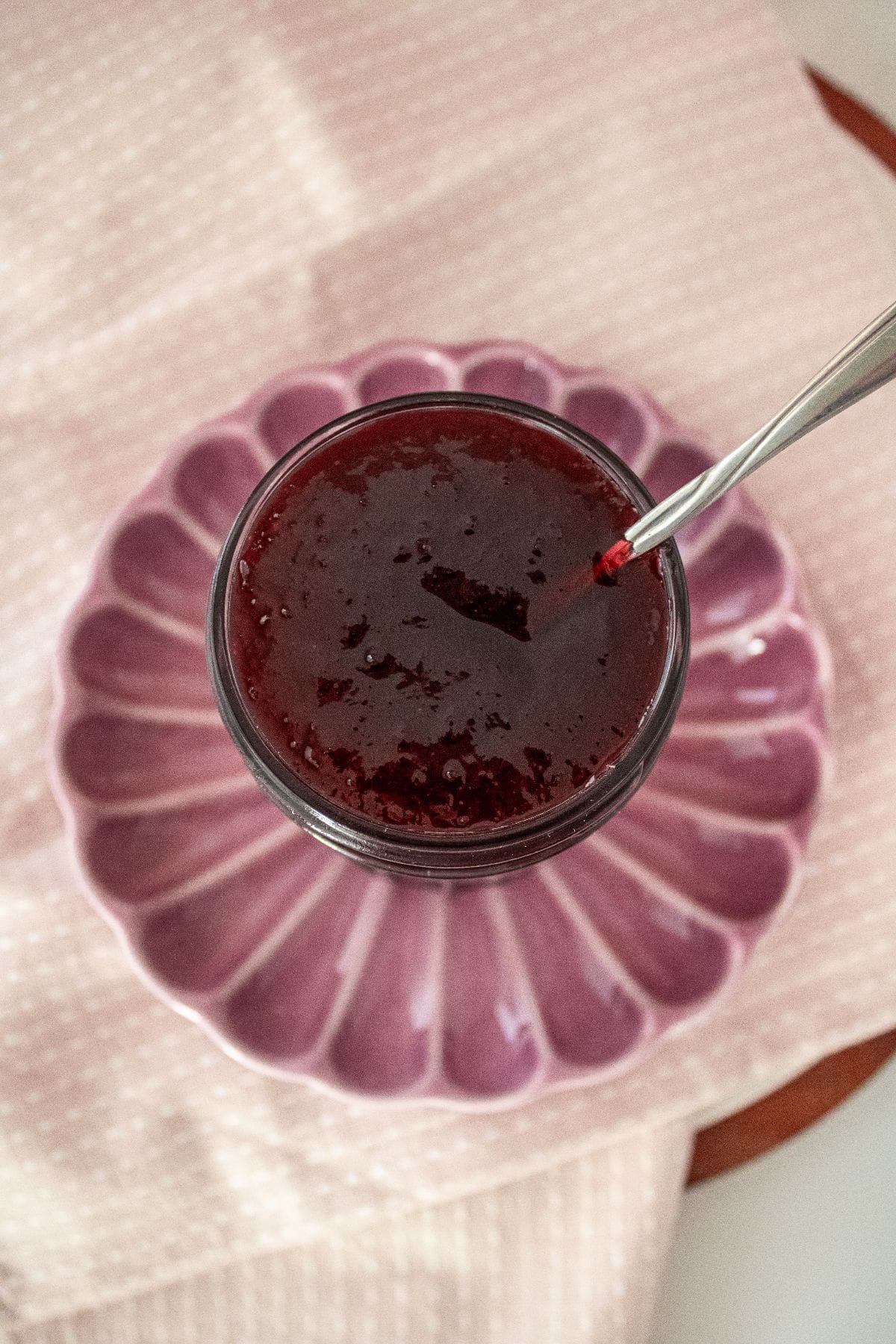
Serving Suggestions:
You will find many ways to enjoy Cherry Jam. Some suggestions are:
- For breakfast, with a croissant or spread on toast. It is also great alongside our Oat Flour Pancakes or Waffles.
- As a sweet treat, spread on sourdough bread or our Buttermilk Scones with a dollop of cream.
- Stir some through Greek yoghurt or Vanilla Ice Cream.
- As the filling in our easily made and very delicious Jam Oatmeal Bars.
This easily made Cherry Jam is likely to become a family favourite. I would love to hear from you in the comments below when you have given it a try!
Alex xx
More Delicious Recipes For You To Try:
Stay in touch!
Follow me on Facebook, Pinterest, Flipboard and Instagram and subscribe to my newsletter.
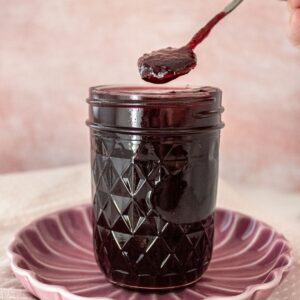
Cherry Jam
Equipment
- 4 x 300 ml (10 fluid oz) Jars
Please note:
For accuracy, when weights are provided, we recommend weighing your ingredients. This will produce the best results. All oven temperatures listed are for fan forced.
Ingredients
- 1 kg (2.2 lb) cherries – prepared weight See Note 1
- 3 ⅓ cups (755 gm) white granulated sugar See Note 2
- ½ cup (125 ml) lemon juice See Note 3
Instructions
Sterilising the Jars:
- Sterilise the jar or jars you'll be using to store the jam. Choose glass jars with an airtight, metal lid and ensure they have been washed by hand in hot soapy water then rinsed well. Check that the metal lids do not have rubber inserts – if they do, allow them to air dry, instead of placing in the oven. Preheat the oven to 130 Degrees C (270 F) and place the jars in the oven for 15-20 minutes. Keep the jars warm.
For the Cherry Jam:
- Place two small saucers or plates in the freezer. (See Note 5.)
- Wash and dry your fruit. Remove any stems from the cherries and pit them.Discard the pits and cut the cherries in half, removing any blemishes.
- Add the cherries to a large saucepan and cover with a lid. Turn the heat onto medium, and bring to a simmer. Stir occasionally. The cherries will release their juices as they warm through.Simmer for 10 minutes, or until the cherries are soft enough to be blended.
- Take the saucepan off the heat and carefully purée using an immersion blender, until lovely and smooth.
- Return to the heat and turn onto medium. Add the sugar and lemon juice to the saucepan. Stir until the sugar dissolves – this will take 2-3 minutes.If sugar crystals get caught on the side of the saucepan, scrape down with a spatula.
- Once the sugar has dissolved, increase the heat to a rolling boil.Boil for 14-18 minutes, stirring frequently. After 14 minutes, begin to check for the setting point. Your jam will likely take between 14-18 minutes, but it will depend on the width of your saucepan and how rapidly the jam is boiling.
- Turn off the heat and spoon a little of the jam onto one of your chilled saucers.Let it stand for 30 seconds to cool, and then run your finger through it. If it wrinkles, even slightly, it is ready. If it is still quite liquid, put it back on the heat and boil for a further 1-2 minutes, and retest until ready. Alternatively, you could use a candy thermometer. Setting point is reached when the thermometer reaches 105 Degrees C (220 F).
- Skim any scum off the top of the jam with a spoon.Allow the jam to stand for five minutes.
- Carefully ladle your jam into your hot jars and put the lids on immediately. Allow the jam to cool completely. Wipe the jars to remove any spills, and store the jam in a cool, dark place.
Notes
- Cherries: this is the prepared weight, after the cherries have been pitted, stems removed and trimmed. Ensure your fruit is freshly picked and of good quality. Avoid fruit that is bruised or over-ripe. The amount of pectin in fruit decreases as it ages, and as cherries are already low in pectin, fresh is best! Good quality fruit that is frozen fresh and isn’t overly icy can be used. It can be used from frozen. The cooking times will be similar – just test as per the recipe.
- Sugar: do not reduce the amount of sugar. Whilst the sugar sweetens the fruit it also acts as a preservative and helps the jam to set. If you reduce the sugar, your jam may not be thick enough or shelf-stable.
- Lemon juice: not only balances the sweetness of the sugar, but it also contains acid and pectin, which help to set the jam.
- Sterilising the jars: properly sterilising your jars is an essential process to remove bacteria that could cause your preserves to spoil.
- Chilled plates: we use the chilled plates to quickly cool the jam when testing the setting point.
- Saucepan: I choose a large, wide saucepan that has enough height to enable the jam to boil vigorously. More surface area means the liquid will evaporate faster; having sufficient height means you can boil the jam at a higher heat and maintain the fresh flavour of the persimmons. Avoid aluminium, copper or iron pans; the acid in the fruit may react with the pan, giving the jam a metallic taste.
- Wooden spoon: do not use a metal spoon – it will become very hot. A long-handled wooden spoon is important to avoid being burnt by a splash from boiling jam.
- Setting point: my jam reached its setting point about 15 minutes after it began to boil rapidly. Boiling time will vary depending on the size of your saucepan and the heat that you apply.
- Storage: when the recipe is made according to instructions and the jars have been sterilised properly, the jam will be shelf-stable for up to a year when stored in a cool, dark place. A jar should be refrigerated after opening. This recipe has not been tested using a canning method. Please refer to the USDA Canning Guidelines for techniques, or follow a recipe designed for long-term canning.
- Nutritional information: is based on one whole jar. The nutritional information is an estimate only.
Nutrition Estimate:
Nutritional Disclaimer:
The nutritional information is an estimate only, and is derived from online calculators. For accurate results, we recommend calculating the nutritional information based on the ingredients and brands you use.






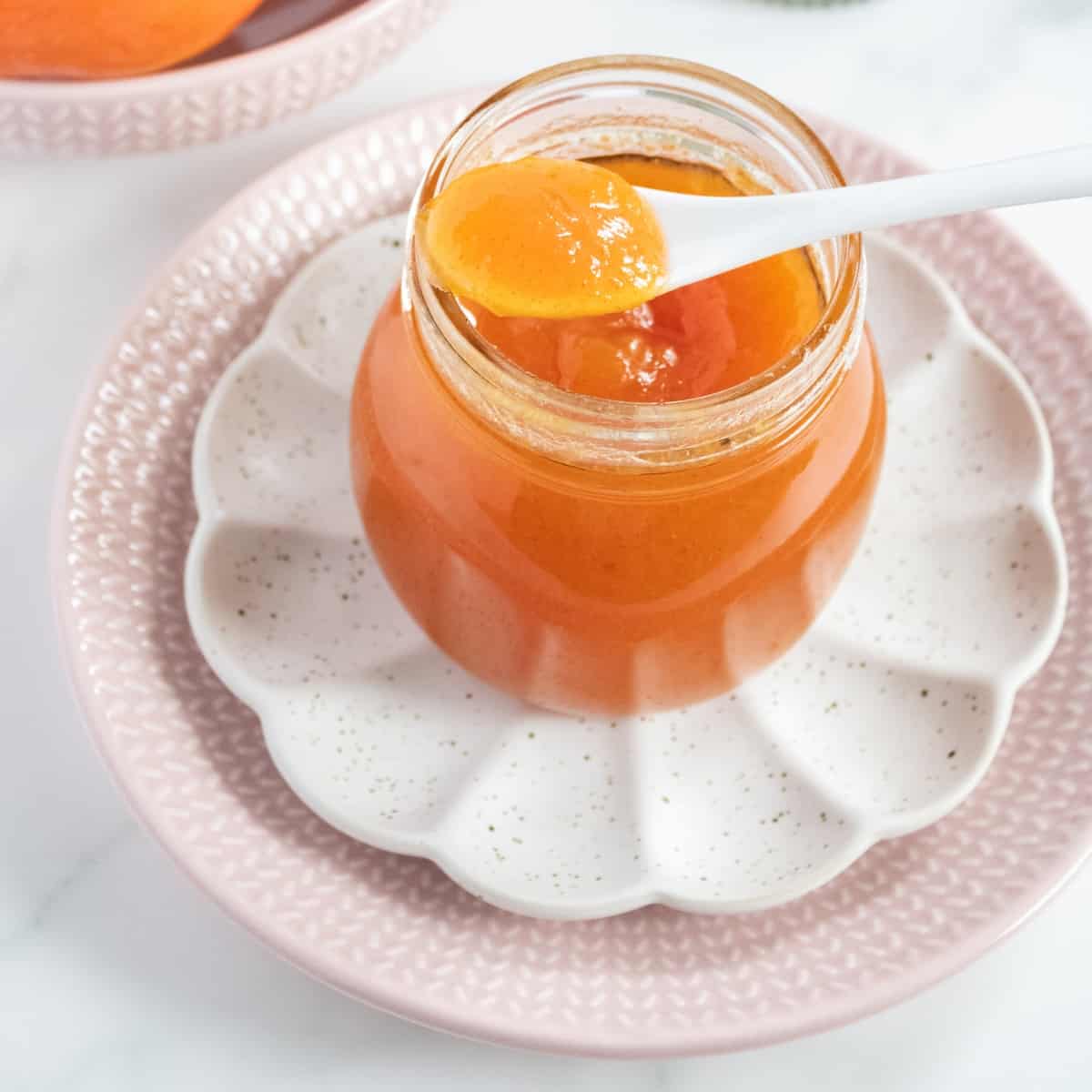
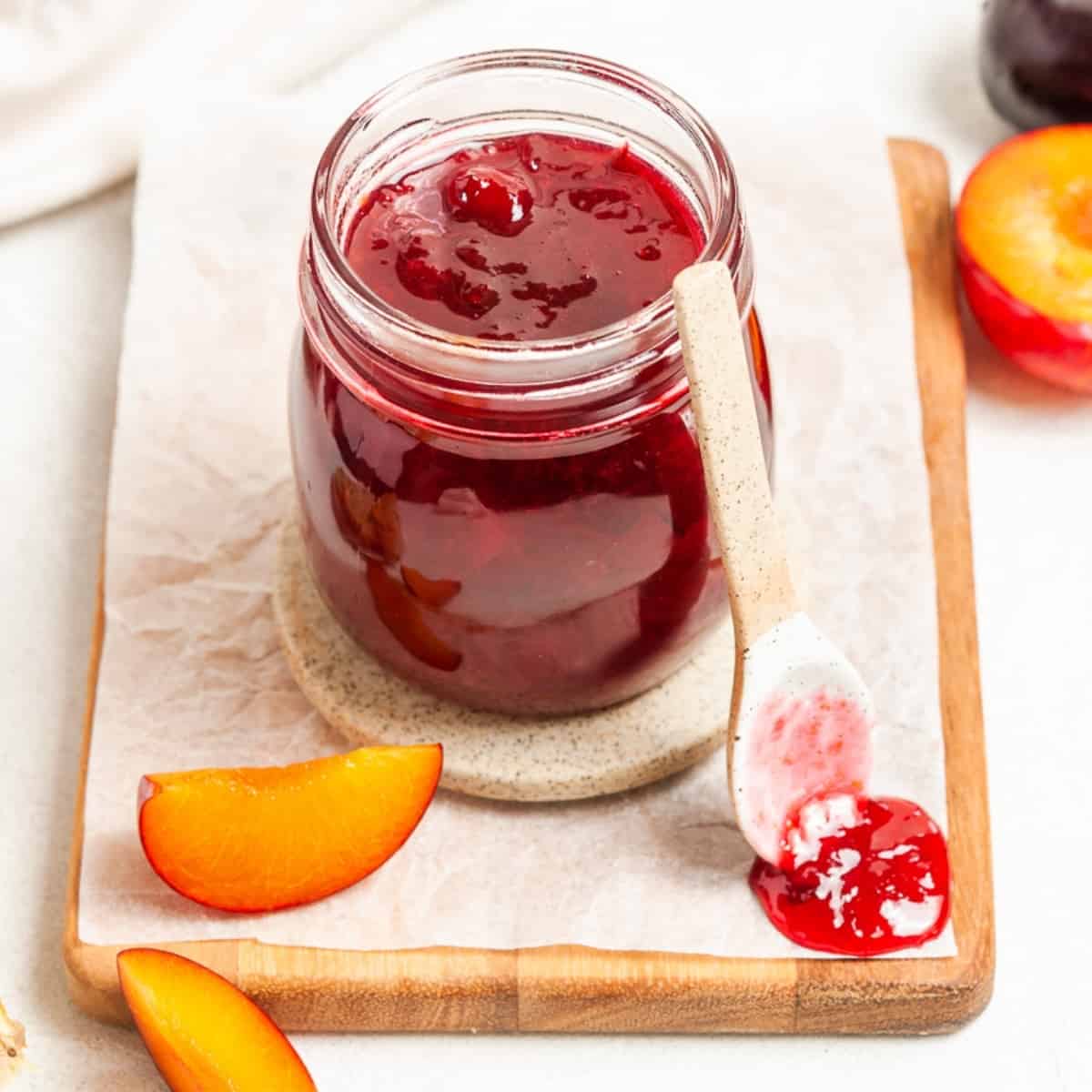

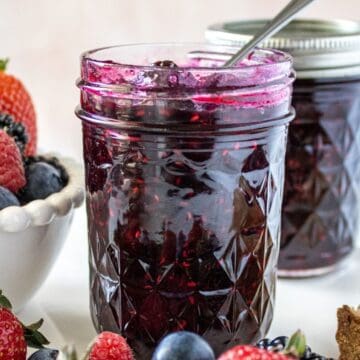
Leave a Comment